Posted in Your Experiences
July 1, 2015
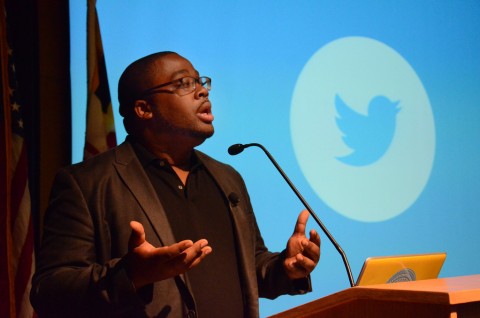
Photo by NASA Goddard
Last week I had an interesting conversation with an evaluator who was curious about some of the networks for food system development we’ve been supporting through IISC. We got to talking about “metrics,” which led into consideration of the role of story in not simply gauging network effectiveness, but also in stimulating network evolution. Communication and social learning are part of the life-blood of human networks. This is something that we’re coming to understand at a more profound level amidst the complexity of food system transformation work at all levels.
As we try to identify “leverage points” to shift regional food system dynamics in New England in the direction of increased local production, food security, economic development, resiliency and equity across the board, we are realizing that more robust connectivity and sharing across boundaries of many kinds is a significant strategy and form of structural change that can allow for critical self-organization and adaptation. Stories become one of the critical nutrients in this work.

For example, as much as we have begun to share data, and importantly disaggregated data, across the region, we have found that stories often have more stickiness and staying power. The stories that were shared at last year’s Food Solutions New England (FSNE) Food Summit about racial equity and white privilege have been referenced for their impact in creating an environment of genuineness, that have spurred others to speak up and take up the conversation about the reality of structural racism in our food system. This has in turn brought more trust and diversity to the network, which has helped to create a more comprehensive understanding of the food system and possibilities for decentralized and more formally coordinated network action.
Furthermore, we have begun to solicit stories of success and innovation around embracing the FSNE Vision (of 50% self-sufficiency with regards to regional food production by the year 2060) and racial equity commitment. And coming out of this year’s Summit, there is interest in sharing stories of how people are working towards “fair price” across the food chain, in such a way that food workers, producers of varying scales, distributers and consumers have living wages and access to health-promoting and culturally diverse food. The curation of these stories we see as beginning to change the underlying economic narrative.
Stories then become fuel in many ways, providing different points of access, connection, inspiration, education, and meaning-making. Stories are like enriched compost that can be fed back into the network to nurture new growth. Our work as a Network Team, as network gardeners, is to “close the resource loop,” encourage and support more equitable channels for expression, more cross-fertilization, more interest in diverse (and concealed) stories and “processing venues” for these (virtual and in-person).
How are you using story to feed your net work forward?
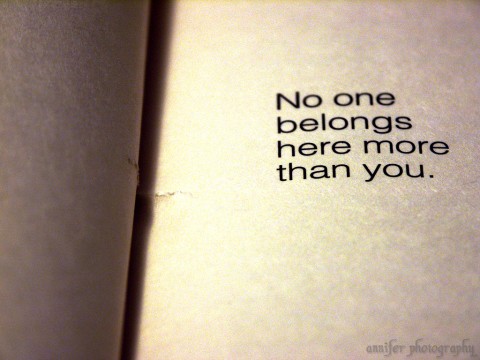
June 17, 2015

Photo by Rebecca Siegel
Still fresh on the heels of the 5th annual Food Solutions New England Regional Food Summit, many attendees seem to be buzzing about the two days of conversation in Boston that focused on the 2060 Vision, racial equity commitment, food chain workers campaigns, and the challenge of creating “fair price” across the food system. It was my privilege to facilitate for a third year, and to help set the tone for the evolving spirit of regionalism and ongoing work of network building. I opened with the following story, which some of you may know well, and comments. Read More
May 13, 2015
“Out on the edge you see all the kinds of things you can’t see from the center.”
~Kurt Vonnegut

Last week while having a discussion with a group about food system economics, I was reminded that the word “externalities” does not always refer to something bad. An externality can also be something beneficial that is not formally accounted for by “the market.” This had me reflecting on what can happen in networks, really any collaborative endeavor, where some of the real “goods” remain out of sight, on the edges of peripheral vision, at least with respect to where people typically tend to concentrate focus. Read More
May 5, 2015
We’ve heard this call and response chant echo down boulevards from St Louis to Baltimore as the #BlackLivesMatter movement takes to the streets. This is what democracy looks like, when the people most affected by a situation organize for change. They call out to us from the streets to remind us that democracy is not about the mechanics for voting for representation.
We don’t all have to march in the streets to use our power and privilege to push for a more just society. I received a copy of a wonderful letter last night. A friend who lives in Baltimore was deeply disturbed by a video that appears to show a Baltimore city police officer violently assaulting a man from behind, even though his hands are raised in surrender. Read More
March 26, 2015
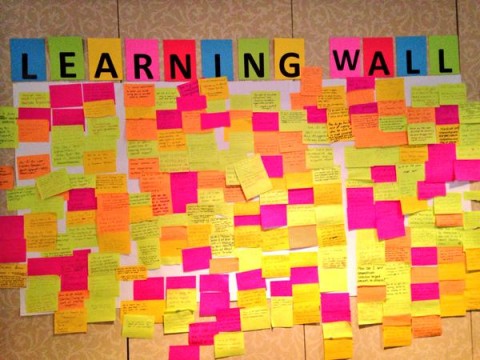
Just returning from the Champions for Change gathering in Washington, DC hosted by the Tamarack Institute and the Collective Impact Forum. I was in attendance with a couple of others from the Food Solutions New England Network Team to learn more about people’s experiences with creating and developing a “backbone” function in their “collective impact” efforts, and also had the opportunity to do a couple of skills sessions around IISC’s “Dimensions of Collaborative Success” framework from Facilitative Leadership for Social Change. Read More
December 22, 2014
“As long as it remains invisible, it is guaranteed to remain insoluble.”
Margaret Heffernan, from Willful Blindness
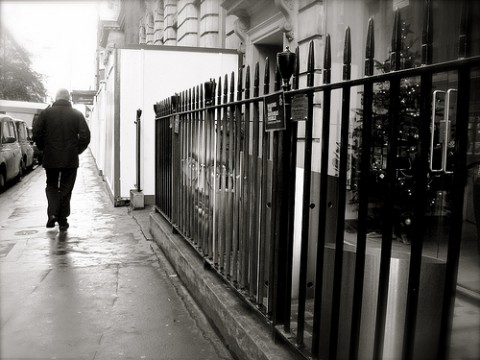
Photo by Marie Aschehoug-Clauteaux
As I look back on 2014 through the lens of the work we have done at IISC supporting networks and movements for social justice and system change, one of the most significant themes that I’ve distilled is the value of “making the invisible visible.” This month I’ve facilitated a number of reflection sessions with diverse groups to gauge the development and impact they have felt and observed from our work over the course of the year. I tend to ask people how they see change happening at different levels: self, group, larger systems (organization, neighborhood, community, state, region, etc.). I also like to ask them to reflect via the use of stories, which I find often help to capture and convey developmental processes.
What has come from this sharing is that even though some of the big goals around equity and sustainability remain elusive, there has been movement and a significant part of this development comes down to seeing what had previously been unseen. While the methods for getting to this recognition have varied – from system mapping and analysis to network mapping to structural and power analysis to learning journeys to dialogue and tackling difficult conversations – by creating ample space to see, share and suppose, there has been significant deepening of relationships (to self, other, the work), change processes, and potential impact.
So what is being made visible? Read More
December 10, 2014
“What’s most systemic is personal . . . and interpersonal.”
– rift on a Peter Senge quote

At IISC, one of the three core lenses that we bring to our collaborative capacity building for social change work is love as a force for social transformation. How this lens impacts what we do as practitioners depends on context, though often it comes down to ensuring that there is time for people in the collaborative change efforts we support to connect on a personal and interpersonal level. One way to do this is to invite people to share stories and do this beyond the parameters for their professionally defined roles. I did this recently with a group and as is often the case, there were a few areas of resistance in the collective body. “Why are we doing this?” asked someone with a hint of consternation. That became my opening. Here is what I offer as a response to discomfort around what some people call “touchy feely” exercises.
Why are we doing this?
- In general terms, to expand collective potential.
- To help each of us to be more fully seen and appreciated for who we are, beyond abstractions and implicit assumptions. When people do not feel seen or appreciated they can disengage, or “act out” to get the attention they want.
- To deepen connection, build trust and increase social velocity.
- To test and stretch the boundaries of “appropriate” and “legitimate” ways of knowing and being with one another. Otherwise people can default to ways that privilege those most comfortable with certain ways of being (often strictly professional and cerebral).
- To grow “positivity” – that is, to expand the overall collectively felt sense of positive emotions (which includes pride related to the demonstrated ability to have and hold difficult conversations). Positivity has been scientifically linked with greater physical and psychological capacity to see and take in more (of systems and one another).
I offer these, like a yoga teacher, with compassion for any expressed discomfort or tightness felt in different parts of the collective body. And the invitation is to breathe through this and to see what might be loosened up for the benefit of the whole. For another take on this, I highly recommend my friend Joe Hsueh’s piece “Why the Human Touch is Key to Unlocking Systems Change.”
Curious to hear your own experiences connecting what is most personal and interpersonal with systemic change.
October 22, 2014
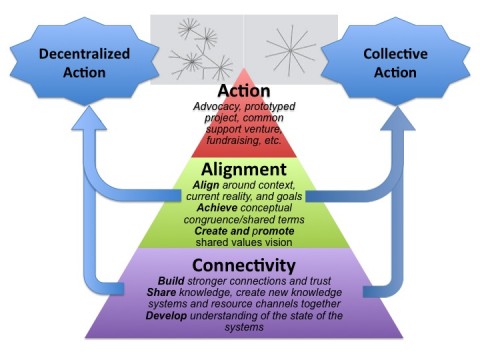 The above graphic is something that I recently created, borrowing heavily from the good work of Peter Plastrik and Madeleine Taylor, to help convey what is meant by engaging in “network strategy.” One of the challenges we’ve encountered in working with different networks is helping people to understand the difference between strategy development and network development. I try to meet this challenge, in part, by showing how they are not so different, or at least, that they are intimately connected. The diagram is also designed to help people get beyond some of the either/or thinking that we encounter. For example, it’s not that we have to choose between decentralized self-organized action and more formally coordinated collective action. It can be both!
The above graphic is something that I recently created, borrowing heavily from the good work of Peter Plastrik and Madeleine Taylor, to help convey what is meant by engaging in “network strategy.” One of the challenges we’ve encountered in working with different networks is helping people to understand the difference between strategy development and network development. I try to meet this challenge, in part, by showing how they are not so different, or at least, that they are intimately connected. The diagram is also designed to help people get beyond some of the either/or thinking that we encounter. For example, it’s not that we have to choose between decentralized self-organized action and more formally coordinated collective action. It can be both!
So here’s what the graphic is meant to convey. First of all, network strategy is grounded at a fundamental level in creating (strategic) connectivity, by building linkages and trust between key stakeholders and perhaps unusual bedfellows. This can be done by convening people; sharing stories, data and other forms of information; co-creating knowledge; learning together, etc. Part of the value of this connectivity is that it can lead to orthogonal thinking and bolster individual network participants’ efforts in the shared domain where the network is focused. What also may ensue is self-organized action between those who are meeting one another for the first time or getting to know one another better (see the arrow to the left side of the triangle). This is all well and good and is something that networks should try to track. Read More
July 10, 2014
“In spite of current ads and slogans, the world doesn’t change one person at a time. It changes as networks of relationships form among people who discover they share a common cause and vision of what’s possible.”
-Margaret Wheatley and Deborah Frieze (2006)

For the past two years, I’ve had the fortune of partnering with Carole Martin to create and deliver a network leadership development program for regional and economic development in “the north country” (northern NH, southern Quebec, eastern VT). This opportunity was made possible by funding from the Neil and Louise Tillotson Foundation and took the form of something we called the Community Practitioners Network (CPN). Subsequently, some of the members of the first cohort have taken to calling it the “Community Placemakers Network” (more on that another time).
One of the first steps Carole and I took in creating the program was to begin with a set of principles, which, in good network fashion, evolved over time. These principles guided our design and facilitation of the program as it emerged, and we offered them to and co-evolved them with the cohort as they considered how to bring them to their own leadership in their organizations, communities, and beyond. Here is a condensed version of the lastest iteration of the principles:
- Look for what is beyond the immediate sight lines and intersections – Part of the power of networks is emergence; expect and delight in the unexpected that comes from the meeting of different minds and perspectives.
- Design for serendipity – Don’t try to control and account for all outcomes. First of all, it’s impossible. Secondly, as Andrew Goldsworthy once said, “Too much control can kill a work.”
- Periphery, not (just) center – Network action is not simply about what is happening “in the room” but what transpires “after the meeting,” not what goes on at a “steering group” level, but what happens in two-sies and three-sies that form/partner/innovate “out there.”
- Process sometimes counts as action – Creating stronger connections and building alignment among network members/participants can be significant progress.
- We move at the speed of trust – Make time and space for trust to be built.
- Contribution before credential – Contributions are what count, and can come from anyone.
- Feed the network through questions so that it has a life of its own – Using inquiry can help to unlock network potential in the pursuit of unique and context-specific answers.
Always eager to hear others and how you have put them to use . . .
June 26, 2014
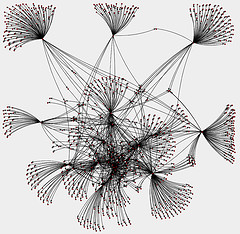
Picking up on the spirit of yesterday’s post about asking “beautiful questions” and inspired by a staff challenge to articulate lines of inquiry stemming from IISC’s core lenses, I offer this post. It distills some of the underlying questions that adopting a “network lens” inspires for social change work. Please add, adjust, edit, and rift!
- How does your organization/network/change initiative strive to add value to (rather than duplicate) existing efforts? What do you do best, and how might you then connect to the rest?
- What are you doing to support and strengthen connections and alignment within and beyond your organization/network/change initiative?
Read More
June 16, 2014
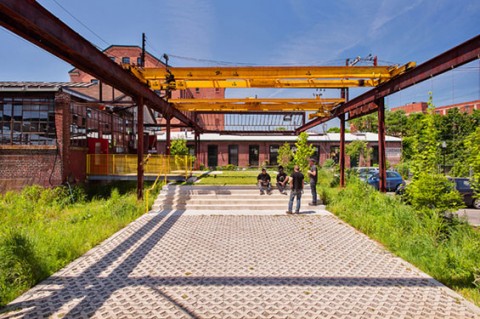
Last week’s New England Food Summit was a unique opportunity to bring a conversation that had begun in the northern more production-oriented parts of the region to a place where access, equity and urban ag are leading edges of the conversation. Food Solutions New England (FSNE) is leading a charge that challenges the imagination of people in six states to see and work together for a day in 2060 when we are able to produce (farm and fish) at least 50% of what is consumed here. This challenge takes on unique dimensions in different parts and communities of the region. In Rhode Island, where this year’s Summit was held, this means working with the highest unemployment rate in the country, an ever more diverse population and the reality of very limited space in which to place new food operations.
But as Ken Payne, member of the Rhode Island delegation and chair of the Rhode Island Food Policy Council, reminded Summit attendees, a central call is to creatively go about the work of “repurposing space” – physical, moral and economic.
Read More
June 11, 2014

This past weekend’s CommonBound Conference was quite the experience. It was inspiring to be with the more than 600 participants from around North America talking about and sharing examples of what it might take to evolve a just and sustainable economy. I found the event’s closing plenary, an interview of and conversation between Adrienne Maree Brown, Gar Alperovitz, and Gopal Dayaneni, to be particularly stirring. For those who missed it, here is a smattering of what was buzzing in the Twittersphere . . . Read More








 The above graphic is something that I recently created, borrowing heavily from the good work of
The above graphic is something that I recently created, borrowing heavily from the good work of 



